
Kranjska Gora is a town in northwestern Slovenia, on the Sava Dolinka River in the Upper Carniola region, close to the Austrian and Italian borders. It is the seat of the Municipality of Kranjska Gora. The tripoint between Austria, Italy and Slovenia lies on the mountain of Dreiländereck, known as Peč in Slovenia.
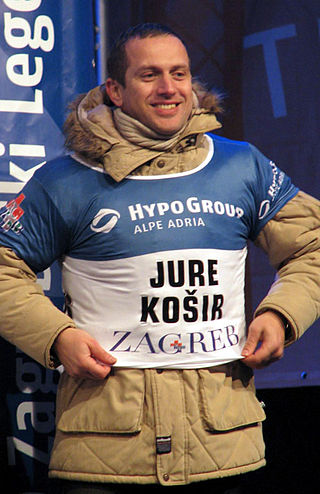
Jure Košir (; born 24 April 1972 is a former Slovenian alpine skier.
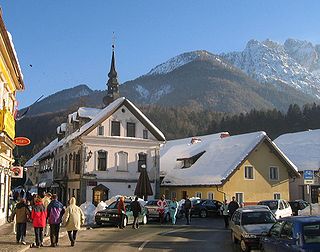
Kranjska Gora Ski Resort is Slovenia's oldest ski resort at Kranjska Gora, Upper Carniola, opened in 1948. It is divided into five different sections under the Vitranc Mountain, stretched throughout the whole valley of the same name municipality: Mojstrana, Kranjska Gora, Planica, Podkoren 1, and Podkoren 2. It has a total of 20 km of ski slopes, 40 km tracks for cross-country skiing, and Snow Fun Park.

Ganslernhang is a men's classic slalom World Cup ski course in Kitzbühel, Austria, competing for Hahnenkamm Races since 1937.

Podkoren 3 is a black World Cup technical ski course on Vitranc mountain in Podkoren, Kranjska Gora, Slovenia, opened in 1983. It was constructed by Peter Lakota, a successful Slovenian skier.

Chuenisbärgli is a World Cup technical ski course in Switzerland at Adelboden in Bernese Oberland, opened in 1955.

Miranova proga A is a women's World Cup technical ski course in Slovenia, on Pohorje mountain in Radvanje District, Maribor hostin Golden Fox competition since 1978.
Gran Risa is a World Cup giant slalom ski course in Italy at Alta Badia. On Piz La Ila mountain in the Dolomites, it hosted its first World Cup event in 1985.

Saslong is a World Cup downhill ski course in Italy just above Val Gardena/Gröden. Located on the Langkofel in the Dolomites, the race course made its World Cup debut in February 1969. The ski course is named after the mountain Saslonch with an adapted spelling.

Lauberhorn is the longest and oldest active World Cup downhill ski course in the world, which is located and named after the same name mountain in Wengen, Switzerland, debuted in 1930. As Switzerland is and always was military neutral, downhill competitions were held even during World War II.

Männlichen is a classic men's World Cup slalom ski course in Wengen, Switzerland. Located in the Bernese Alps on Lauberhorn mountain, the course made its debut in 1930.

Olimpia delle Tofane is the classic women's World Cup downhill ski course in Cortina d'Ampezzo, Italy. It debuted 68 years ago at the 1956 Winter Olympics, hosting the men's downhill.

Kandahar is a classic World Cup downhill ski course in Bavaria, Germany, opened in 1936. It is located at the Garmisch Classic ski area on the Zugspitze above Garmisch-Partenkirchen.
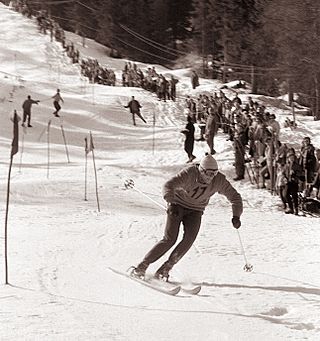
1st Vitranc Cup was an alpine skiing competition, held between 4–5 March 1961 in Kranjska Gora, SR Slovenia, Yugoslavia. They were hosting two FIS 1A international events.
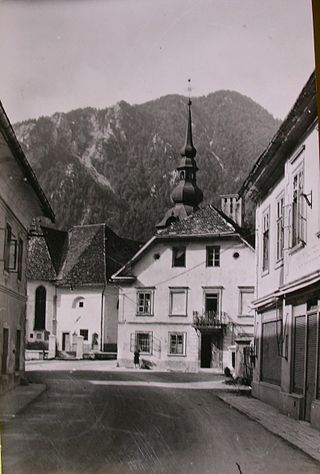
2nd Vitranc Cup was an alpine skiing competition, held between 2–3 March 1963 in Kranjska Gora, SR Slovenia, Yugoslavia. They were hosting two FIS 1A international events.
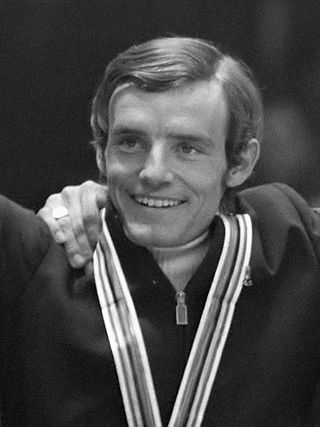
3rd Vitranc Cup was an alpine skiing competition, held between 29 February–1 March 1964 in Kranjska Gora, SR Slovenia, Yugoslavia, hosting two FIS 1A international events.

4th Vitranc Cup was an alpine skiing competition, held between 27 and 28 February 1965 in Kranjska Gora, SR Slovenia, Yugoslavia. They were hosting two FIS 1A international events.

6th Vitranc Cup was an alpine skiing competition, held between 11 and 12 March 1967 in Kranjska Gora, SR Slovenia, Yugoslavia. They were hosting two FIS 1A international events.

7th Vitranc Cup was an alpine skiing competition, held between 9–10 March 1968 in Kranjska Gora, SR Slovenia, Yugoslavia, hosting FIS International event and premiere FIS World Cup event.

8th Vitranc Cup was an alpine skiing competition, held from 16–17 February 1969 in Kranjska Gora, SR Slovenia, Yugoslavia. The event played host to two FIS World Cup events.



















